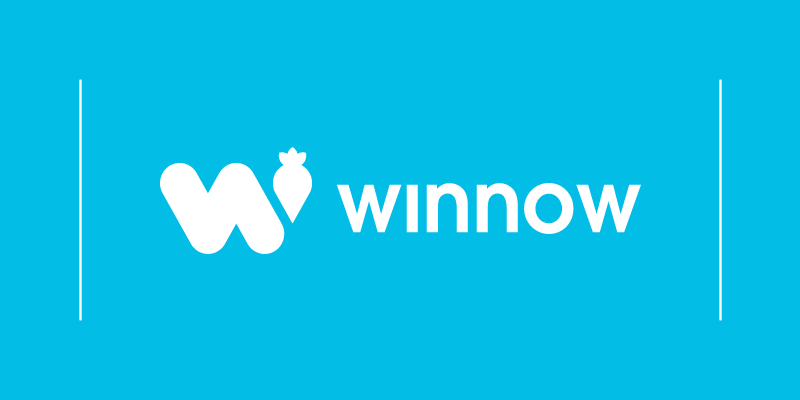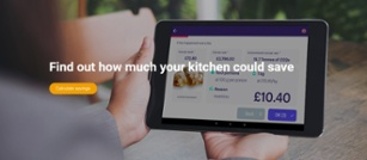The world as we know it is constantly evolving and changing. Prompted by safety concerns, hygiene requirements and the impact of national lockdowns, 2021 saw a considerable shift in consumer attitudes and behaviours. Agility has never been more important for hospitality and foodservice operators as they find new routes to market and adapt to an ever-shifting landscape.
Technology plays a massive part in this evolution for hotels, restaurants, and catering operations. In 2022, the kitchen environment will become more efficient than ever in managing and preparing food.
1 - Flexible working and the rise of "Bleisure."
Extended-stay hotels and home-sharing facilities are doing well even during the pandemic as more people are looking for a change of work environment. People using hotels as makeshift offices is leading to a rise of 'Bleisure', a new buzzword among hoteliers and travellers indicating the combination of business and leisure.
By 2025, an estimated 70% of the workforce will be working remotely at least five days a month. This is a fantastic opportunity for hotels to capitalise on this trend and tailor their offering to meet the demands of this new segment.
2 - Labour shortages accelerate robotics and automation in the kitchen
58% of hospitality workers said they are planning to quit their jobs before the end of 2021, leading to labour shortages in different parts of the world, which accelerated the need for robotic services and automation in the kitchen.
This trend may look like a robotic arm in the kitchen that may end repetitive tasks such as adding toppings to a pizza.
Although robotics won't ever completely replace workers, these labour shortages will increase the appetite for trialling new automated foodservice offerings.
Cloud kitchens and food delivery have become more popular during the pandemic. However, there's a massive opportunity for them to become more sustainable through reducing fuel consumption and packaging. This provides an opportunity to apply automation and technology in these services.
Some major cities are already testing or using robots for delivery, such as Los Angeles, Denver and Madison, Wisconsin. By the end of 2022, dozens of additional cities in the U.S. will likely see their first delivery robots.
EXPO 2020 in UAE is using robotics and A.I. for food delivery. Talabat, the region's online food delivery company, partnered with Terminus to launch autonomous food delivery robots. The robots carry orders from Talabat's cloud kitchen to designated delivery points on the Expo site.
3 - Computer Vision and A.I. become even more present
F&B corporations have embraced machine learning and artificial intelligence at a corporate level. 84% of executives say they will not achieve their desired level of growth objectives without scaling AI
VisioLab is a visual cash register that F&B businesses use for more successful gastronomy management. Their iPad-based point-of-service solution reduces queuing time and staffing requirements by taking pictures of guests' food and automating the checkout process. They work with Google Cloud and Aramark, amongst others.
Various hotels, casinos and catering companies are making strides towards efficiency in the foodservice industry by adopting A.I. to improve data accuracy in their kitchens. It is estimated that enterprises pay $15 million annually for poor data quality.
Measuring food waste is a challenge for all commercial kitchens, with up to 20% of all food purchased going to waste. Winnow develops Artificial Intelligence (A.I.) tools to help chefs run more profitable and sustainable kitchens by cutting food waste in half. Winnow Hub - the analytics platform and reporting suite help teams pinpoint waste quickly, allowing enterprises to drive significant waste reductions at scale.
Hilton is the first in Japan to bring A.I. into their kitchens to fight food waste. They have been using Winnow Vision since January 2020, and it is changing how they approach food management. Within the first 4 weeks of usage, the team successfully cut food waste at Hilton Tokyo Bay by 30%. In the long term, that is equivalent to saving more than 17,016 meals and over US$31,000 savings annually.
4 - Complete digitisation of the customer experience
To protect the health and safety of customers and employees alike, the touchpoints within the food services and hospitality sector will move online while also building on the convenience of digital experiences. Travel and hospitality organisations are prioritising digital systems and tools that will help them gather better insights about customers and use that information to better satisfy their needs. 73% of hospitality leaders said using and applying customer data analytics was critical to the success of their company.
Top three priority areas of going digital as mentioned by industry leaders
(i) Digital analytics
(ii) Front-end customer experience
(iii) E-commerce.
Emirati hospitality brand Emaar Hospitality Group is attracting higher footfalls at its eateries across Dubai by working with a restaurant reservation app called 'Eat'. The digital adoption will enable cloud-based guest management and operations at over 50 restaurants owned by Emaar, in locations including the Burj Khalifa and the Armani Hotel. On the other hand, Emaar Hospitality is also leading the UAE's food waste revolution by using A.I. technology, Winnow Vision, to cut food waste from their operations.
Oracle Hospitality is already seeking to own this space, having launched the 'Touchless Guest Journey', which pulls together a number of their products and services to deliver a clean, digital experience for customers.
Meanwhile, back of house technology will be leveraged to assist employee hygiene and safety. Prominent players like Diversey, who introduced the Internet of Clean, will double down on their technology offering to ensure hospitality businesses maintain extraordinary clean kitchens.
Elsewhere in the hospitality technology space, Fourth - a workforce management tool, built a health survey into their product to help hospitality businesses keep their teams safe. Before shifts, employees use the in-app survey to declare that they are fit to work. first for any COP, the final text mentions fossil fuels, stating that “unabated” coal power
5 - Sustainability part of the everyday
More and more people are focusing on simple everyday actions to live sustainably. In fact, 82% of consumers say that sustainability is more top of mind now than before COVID-19.
One company helping their customers become more sustainable is Google. In 2021, Google Maps launched a new feature in the U.S. that calculates the most eco-friendly route to drive through using traffic data and road inclines. The new feature will be made available in other parts of the world in 2022 and is a part of their commitment to fighting climate change.
Behavioural science teaches us that positive messaging is much more effective than messaging that causes guilt. For foodservice businesses, it's important to show consumers how the brand is making sustainable choices and how their bigger sustainability goals are being broken down into actionable steps. If you're able to show people the impact they can have by choosing your product, they'll feel that much more invested in it.
In the wake of COP26, various hospitality companies and tech companies announced their net-zero targets. Winnow's clients also announced ambitious climate strategies in the build-up to COP26.
IKEA committed to being climate positive by 2030 and Net Zero by 2050. For instance, one point of their sustainability strategy aims to be 100% renewable energy powered across the entire IKEA value chain.
Hilton, who was hosting COP26 in Glasgow, was the first major hotel company to set science based targets aligned with the Paris agreement and approved by the Science Based Targets Initiative. They have pledged to reduce their Scope 1-2 emissions by 61% by 2030 through, among other things, increasing the use of renewable energy and promoting low-carbon diets.
Microsoft also announced their plan to be carbon negative by 2030, and by 2050, they plan to remove all the carbon the company has emitted since 1975 from the environment. They will fund this by having an internal carbon fee, which has been in place since 2012 and increased in 2020, to start charging not only their direct emissions but those from supply and value chains.
From all the conversations about net-zero, one thing remains clear - data is king in the race to net-zero. Data-driven decision making and digitalisation drive efficiency to pave the way for a brighter future. Food waste has negative consequences for the environment and business profits. In 2021 Winnow helped their clients save 36 million meals from the bin, equating to $42 million in savings, which is made possible by accurate data that helps clients pinpoint waste quickly. Reducing food waste is where profitability, data and sustainability intersect. The good news is tools are present and accessible; what we need now more than ever is action.









Comment on my blog